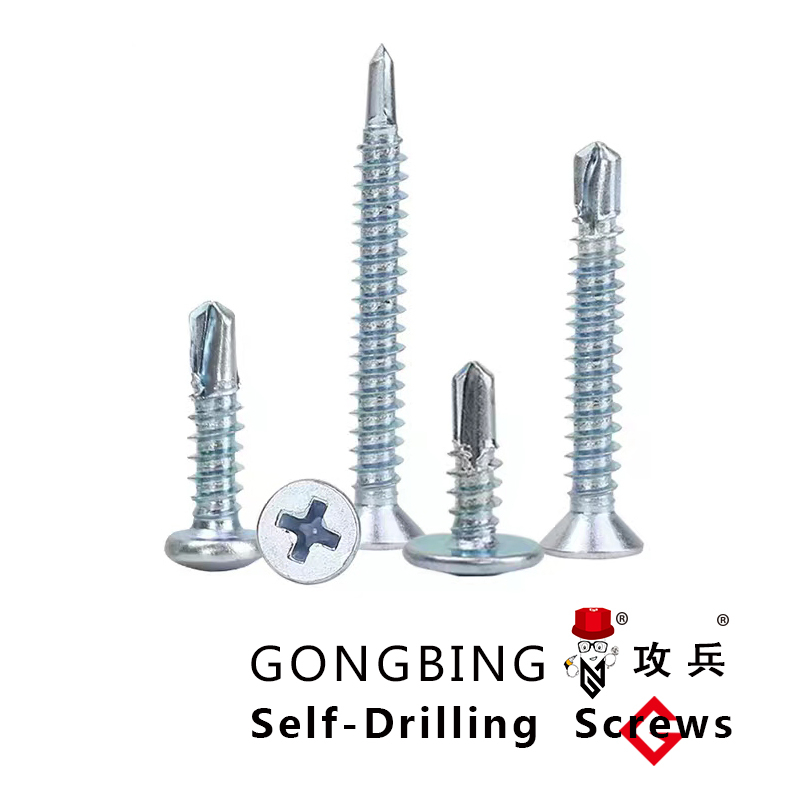Innovative Solutions for Secure Foundations Using Self-Drilling Wall Anchors in Construction Projects
Self-Drilling Wall Anchors An Overview
In the realm of construction and home improvement, the significance of secure anchoring cannot be overstated. Self-drilling wall anchors have emerged as an invaluable solution for a variety of applications, offering both convenience and reliability. These anchors, designed for use in hollow walls, provide a dependable means of supporting fixtures, furnishings, and more.
What are Self-Drilling Wall Anchors?
Self-drilling wall anchors, often referred to as self-tapping anchors, are specialized fasteners engineered to penetrate the wall material without the need for pre-drilling a hole. They are particularly useful in drywall installations but can also be employed in other materials, such as plaster and masonry, depending on the design. The anchor's design typically features spiral threads that allow it to screw directly into the wall, creating a secure hold as it is driven in.
Benefits of Self-Drilling Wall Anchors
1. Ease of Installation One of the most compelling advantages of self-drilling wall anchors is their simplicity. Even those who are not skilled in DIY projects can easily install these anchors using a standard screwdriver or a power drill. This eliminates the need for additional tools or extensive installation guides, saving both time and effort.
2. Strong and Durable Holding Power When properly installed, self-drilling wall anchors can provide a robust holding capacity. They are designed to distribute weight evenly across the wall, allowing them to support a variety of items, from shelves and picture frames to heavier fixtures like televisions.
self drilling wall anchors

3. Versatility Self-drilling wall anchors come in various sizes and styles, making them suitable for different applications. Whether you’re hanging lightweight objects or securing heavier installations, there is likely a self-drilling anchor tailored to meet your specific needs.
4. Minimal Wall Damage Traditional anchors often require larger holes and may lead to more significant damage when removed. In contrast, self-drilling anchors create a smaller entry point and typically leave less residual damage, making them ideal for renters or anyone concerned about aesthetic impacts.
Installation Process
Installing self-drilling wall anchors is straightforward. Begin by selecting the appropriate anchor based on the weight of the item you plan to hang. Next, mark the desired location on the wall with a pencil. Place the tip of the anchor against the marked spot and, using either a screwdriver or a power drill, begin to turn the anchor clockwise. As it rotates, the spiral threads will cut into the wall material, embedding itself securely.
Once the anchor is flush against the wall surface, you can screw in the mounting screw. It’s essential not to overtighten, as this could risk stripping the anchor or damaging the wall.
Conclusion
Self-drilling wall anchors are a pivotal tool for anyone looking to safely and efficiently hang items on their walls. Their ease of use, combined with strong holding power and versatility, makes them a popular choice for both professional contractors and home improvement enthusiasts. Whether you're updating your living space or undertaking a new project, self-drilling wall anchors can simplify the process and ensure that your fixtures remain securely in place. As the realm of construction continues to evolve, these innovative anchors represent a practical solution that meets the demands of modern building techniques.
-
Weatherproof Plastic Expansion Anchors for OutdoorנייַעסJun.06,2025
-
Sustainability in the Supply Chain: Eco-Friendly TEK Screws ProductionנייַעסJun.06,2025
-
Load-Bearing Capacity of External Insulation FixingsנייַעסJun.06,2025
-
Double Head Bolts: Enhancing Efficiency in Industrial MachineryנייַעסJun.06,2025
-
Corrosion Resistance in Chipboard Screws: Coatings for Wholesale DurabilityנייַעסJun.06,2025
-
Butterfly Toggle Bolts : Enhancing Structural ResilienceנייַעסJun.06,2025
